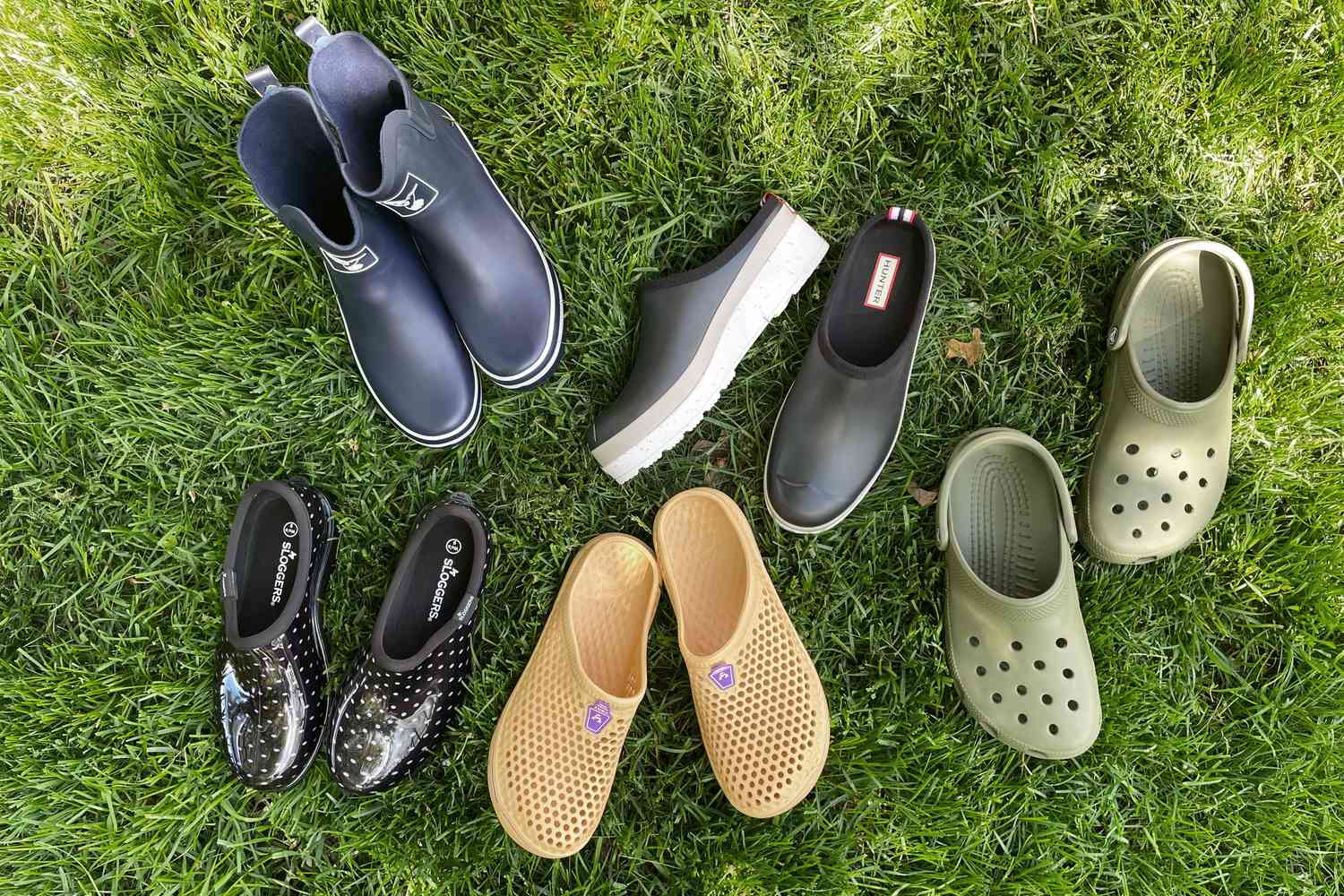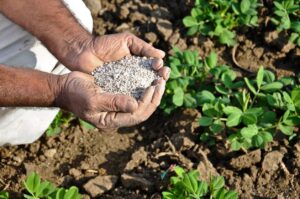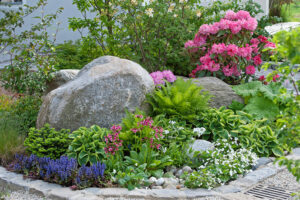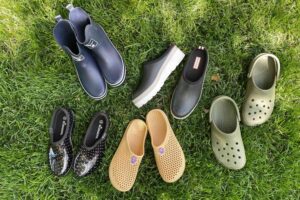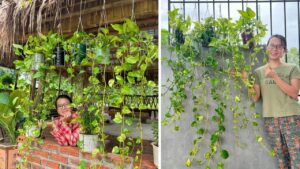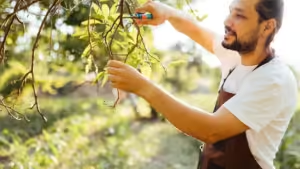Step Into Comfort: The Best Garden Clogs & Waterproof Boots for Gardeners in 2025
As dedicated gardeners know all too well, a day spent tending to plants can quickly turn uncomfortable with the wrong footwear. Wet socks, blistered heels, and mud-caked sneakers aren’t just minor inconveniences—they can transform a peaceful gardening session into a painful ordeal. The right garden footwear provides the perfect balance of comfort, protection, and durability while keeping your feet dry through all your outdoor tasks.
Whether you’re looking for lightweight slip-ons for quick garden check-ins or heavy-duty waterproof boots for serious landscaping projects, this comprehensive guide will help you find the perfect gardening footwear that combines practicality with comfort.
Why Specialized Garden Footwear Matters
Before diving into our top recommendations, let’s understand why dedicated garden footwear deserves a place by your backdoor:
- Protection from moisture: Garden work often involves dealing with water, mud, and morning dew—all elements that standard shoes aren’t designed to handle.
- Easy cleaning: Unlike regular shoes, garden footwear can be quickly hosed off without damage.
- Proper support: Garden tasks involve lots of standing, kneeling, and maneuvering on uneven terrain, requiring proper foot support.
- Quick access: The slip-on nature of most garden shoes means you can transition from indoors to garden in seconds.
- Longevity: Purpose-built garden footwear withstands harsh conditions that would quickly destroy regular shoes.
Most Comfortable Garden Clogs: Lightweight Options for Everyday Gardening
Garden clogs have earned their place as a gardener’s favorite for good reason—they provide the perfect balance of protection and breathability while remaining incredibly easy to slip on and off. Here are the standout performers in this category:
Sloggers Waterproof Garden Clogs
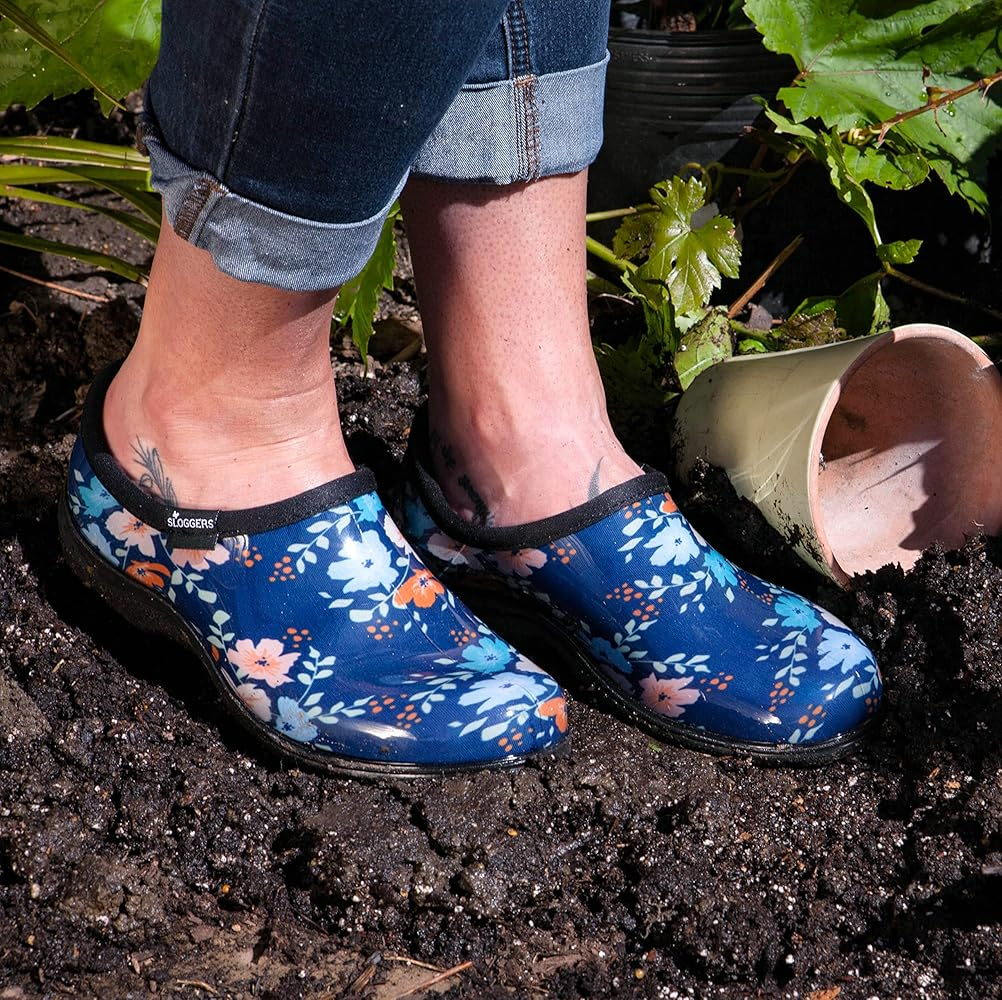
Price Range: $34-$50
Key Features: All-day comfort insoles, deep-lug tread patterns, 100% waterproof design
These American-made garden clogs consistently earn top marks for their exceptional comfort and durability. The premium comfort insoles make a noticeable difference during long gardening sessions, while the deep-lug treads provide excellent traction on slippery surfaces.
What sets Sloggers apart is their attention to fit—while they don’t offer half sizes, their special “Half-Sizer” insoles (sold separately) allow for customized sizing. The recyclable materials appeal to eco-conscious gardeners, and the wide range of playful patterns and colors adds a touch of personality to functional footwear.
Sloggers excel in wet conditions, keeping feet completely dry even when stepping through puddles. After hours in the garden, simply hose them off for a fresh-looking pair ready for your next gardening adventure.
Crocs Classic Clogs
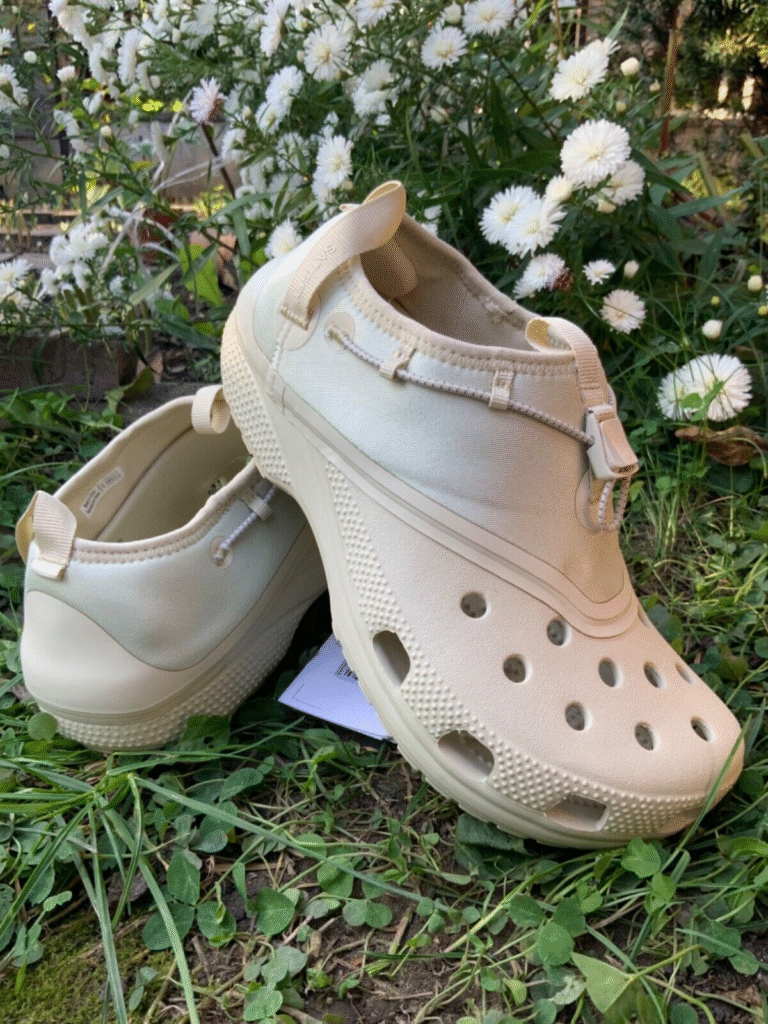
Price Range: $30-$55
Key Features: Ventilated design, lightweight Croslite material, heel strap for secure fit
Though not specifically marketed as garden shoes, Crocs have developed a strong following among gardeners for good reason. Their lightweight, waterproof design makes them ideal for warm-weather gardening, and the ventilation holes keep feet from overheating on hot days.
During testing, Crocs proved comfortable enough for six-hour gardening sessions without causing discomfort. The heel strap provides additional security when needed but can be flipped forward for a more relaxed slip-on style. While they don’t offer quite the same traction as dedicated garden clogs, they’re perfect for light gardening tasks and quick garden check-ins.
One important note: the manufacturer recommends not leaving Crocs in direct sunlight for extended periods, as high heat may cause them to shrink or warp—make sure to store them in a shaded area after gardening.
Hunter Garden Clogs
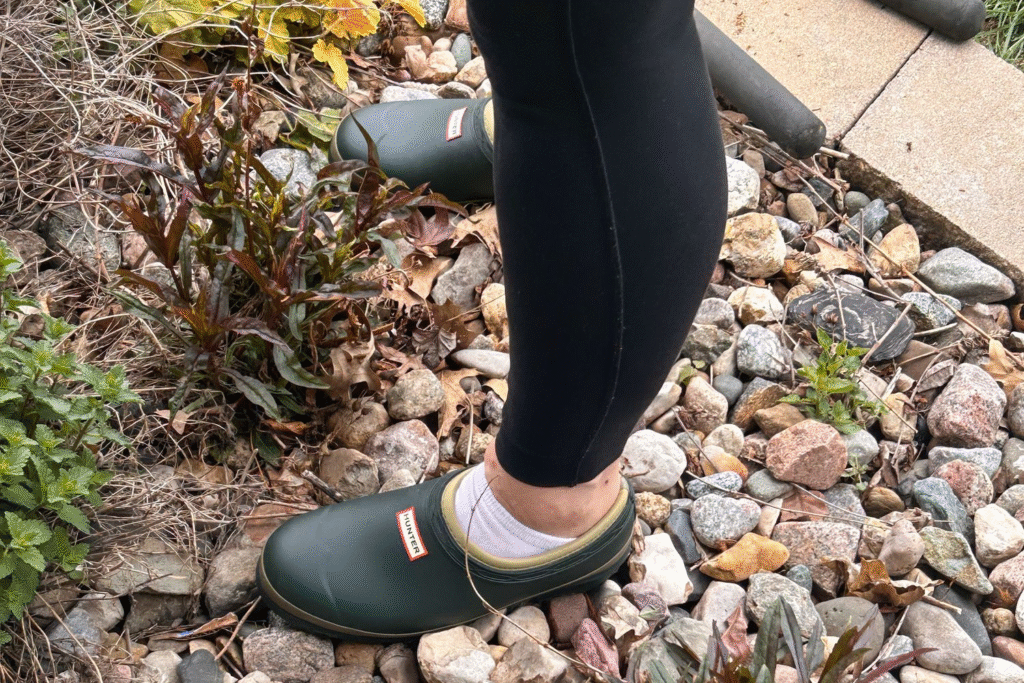
Price Range: $70-$95
Key Features: Premium rubber construction, neoprene lining, enhanced traction sole
For gardeners seeking a blend of performance and style, Hunter Garden Clogs deliver exceptional quality. Made from natural rubber with a water-resistant neoprene lining, these clogs provide extra warmth for cooler garden sessions while maintaining breathability.
The standout feature is their sophisticated design—these clogs look polished enough to wear beyond the garden gate. The slip-resistant rubber outsole provides confident footing on wet surfaces, and a steel shank runs along the sole to prevent arch fatigue during long gardening sessions.
While they represent a higher investment than some other options, their durability and versatile style make them a worthwhile choice for serious gardeners who appreciate quality construction and classic aesthetics.
Amoji Unisex Garden Clogs
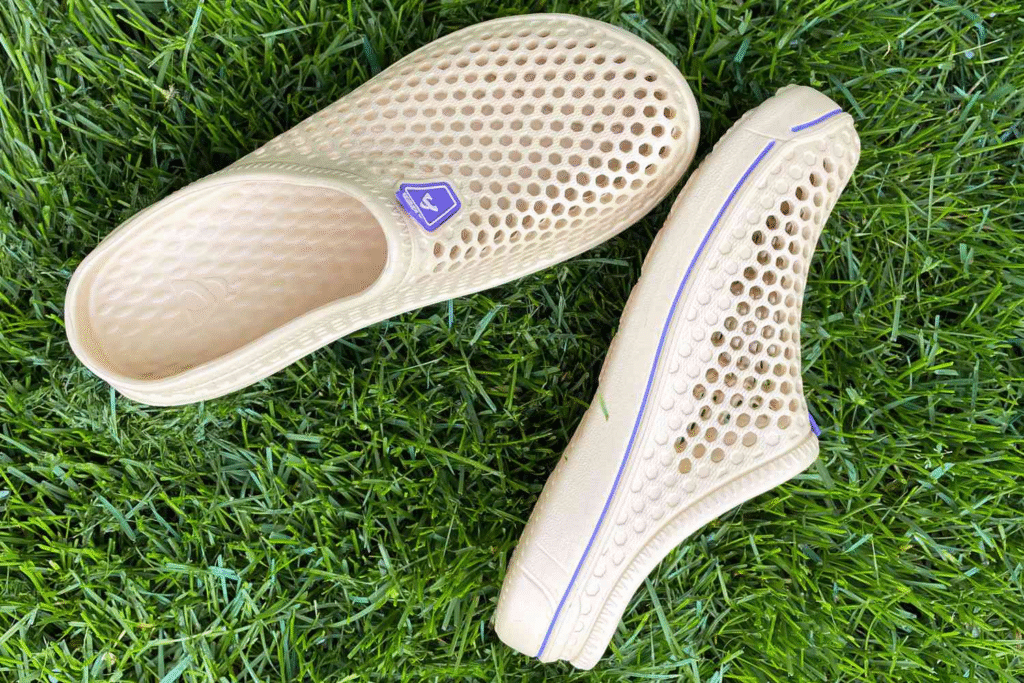
Price Range: $25-$30
Key Features: Cushioned footbed, waterproof construction, lightweight design
As our best budget option, these affordable garden clogs deliver impressive performance at a wallet-friendly price. Testing revealed they provide comparable quality to more expensive brands, with cushioned insoles that make standing and crouching in the garden much more comfortable.
The waterproof material holds up well to garden abuse, and their slip-on design allows for easy on/off transitions. While they may not offer the same level of long-term durability as premium options, they’re an excellent choice for occasional gardeners or those looking for a secondary pair to keep at the greenhouse or shed.
Waterproof Slip-Ons for Gardening: Hybrid Protection
For gardeners seeking more coverage than traditional clogs but less bulk than full boots, waterproof slip-on shoes offer the perfect middle ground. These options provide full foot coverage while maintaining the convenience of slip-on design:
L.L.Bean Wellie Sport Shoes
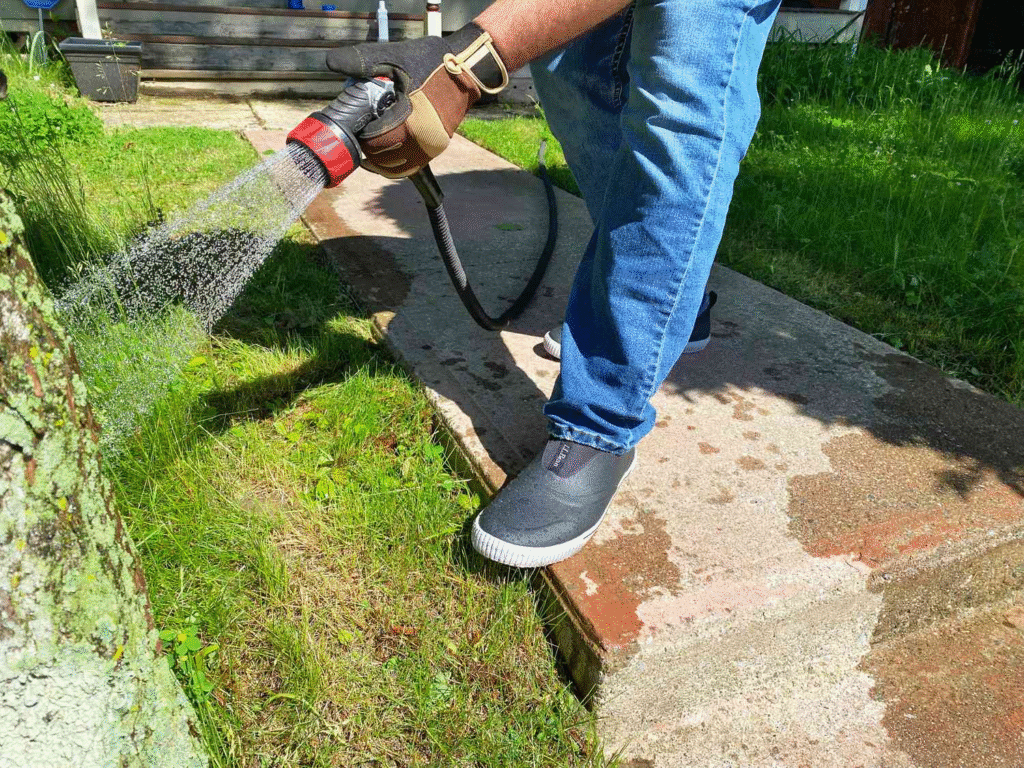
Price Range: $65-$90
Key Features: Sneaker-like comfort, waterproof rubber upper, superior traction
These versatile slip-ons combine the comfort of athletic shoes with the practicality of waterproof garden footwear. The EVA midsole provides lightweight cushioning that makes them comfortable enough for all-day wear, while the waterproof rubber upper keeps feet completely dry during wet garden tasks.
Six months of testing revealed impressive durability—these shoes showed minimal signs of wear and maintained their waterproof integrity even with frequent use. The non-marking outsoles offer exceptional traction on slippery surfaces without tracking mud indoors.
While they’re slightly more challenging to slip on and off than traditional clogs, the added security and support make them ideal for more active gardening tasks like digging, pushing wheelbarrows, or working on uneven terrain.
Totes Bailey Garden Shoes
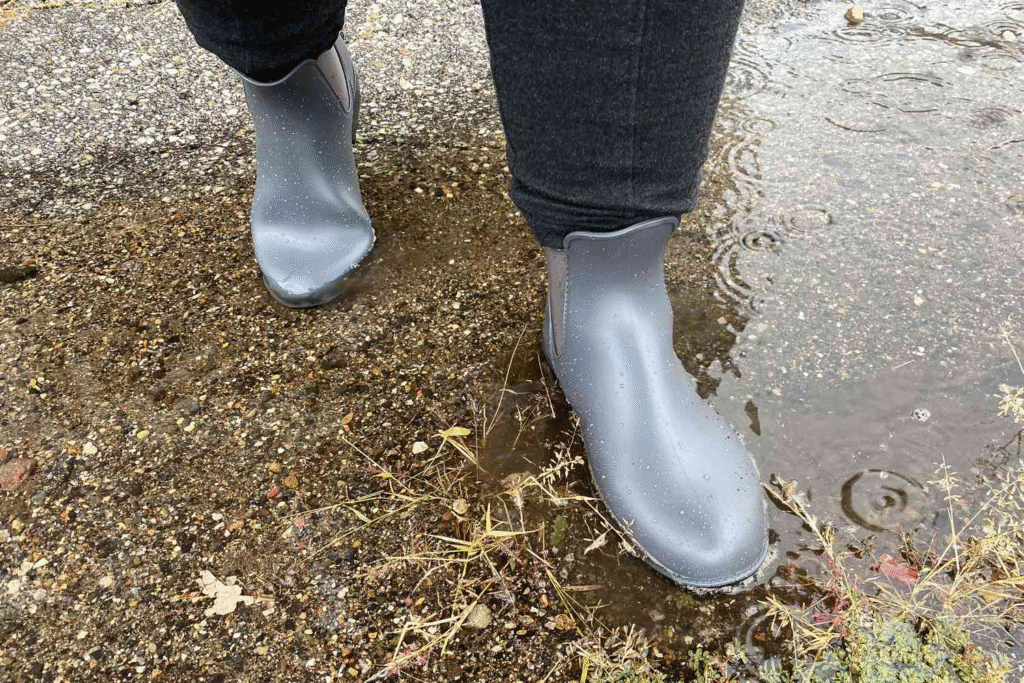
Price Range: $35-$45
Key Features: Everywear technology cushioning, waterproof construction, roomy toe box
These closed-toe garden shoes deliver exceptional comfort right out of the box. The Everywear technology creates a soft, bouncy feeling underfoot that keeps feet happy through extended gardening sessions, while the waterproof material effectively handles wet morning grass and muddy conditions.
The shoe’s design offers more foot protection than open-back clogs while maintaining reasonable breathability. They clean up easily with a quick hose rinse, making them practical for daily use. One sizing note: these tend to run slightly large, so consider sizing down if you’re between sizes.
Dansko Garden Shoes
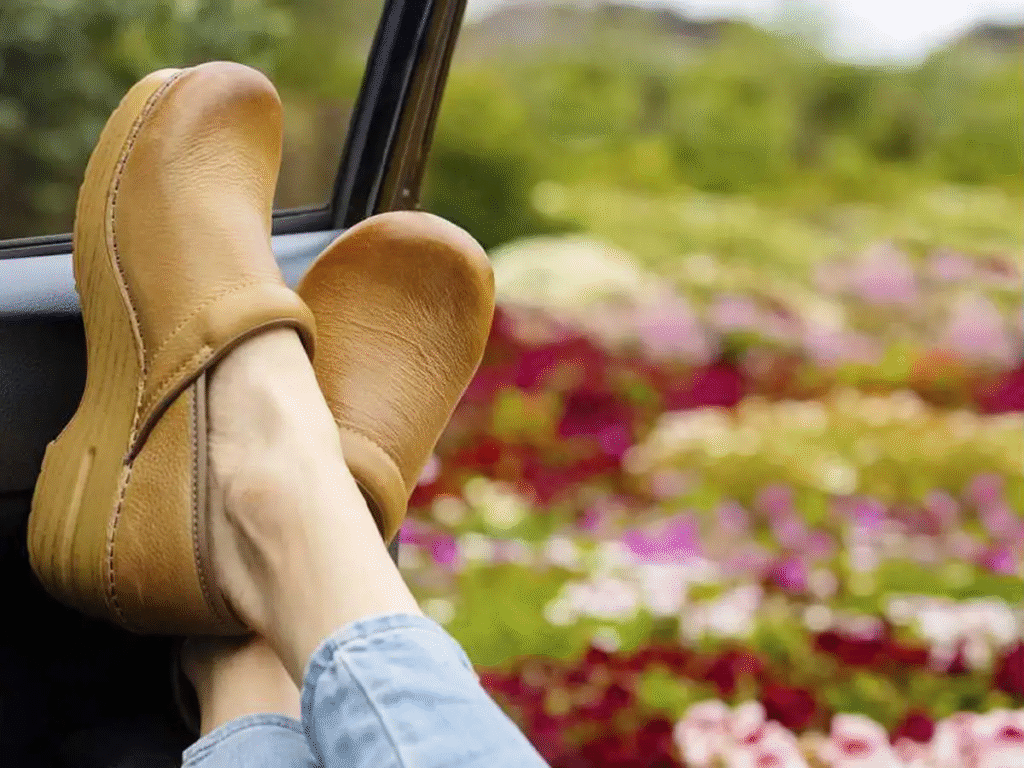
Price Range: $80-$110
Key Features: Premium support, slip-resistant sole, professional-grade comfort
Originally designed for professionals who spend hours on their feet, Dansko’s garden-specific options bring that same all-day comfort to outdoor tasks. These sturdy slip-ons feature EVA construction with slip-resistant rubber outsoles that provide confident footing on varying terrain.
The anatomically designed footbed offers exceptional arch support—a crucial feature for gardeners with foot issues or those who spend extended hours working outdoors. The waterproof material cleans easily, and the roomy toe box allows for natural toe movement.
While they represent a higher price point, their professional-grade durability and superior support make them an excellent investment for serious gardeners or those with foot concerns.
Best Rubber Boots for Gardening: Maximum Protection
When garden projects demand serious protection from mud, water, and rough terrain, nothing beats a quality pair of rubber boots. These options provide comprehensive coverage for intensive gardening work:
Bogs Patch Ankle Garden Boots
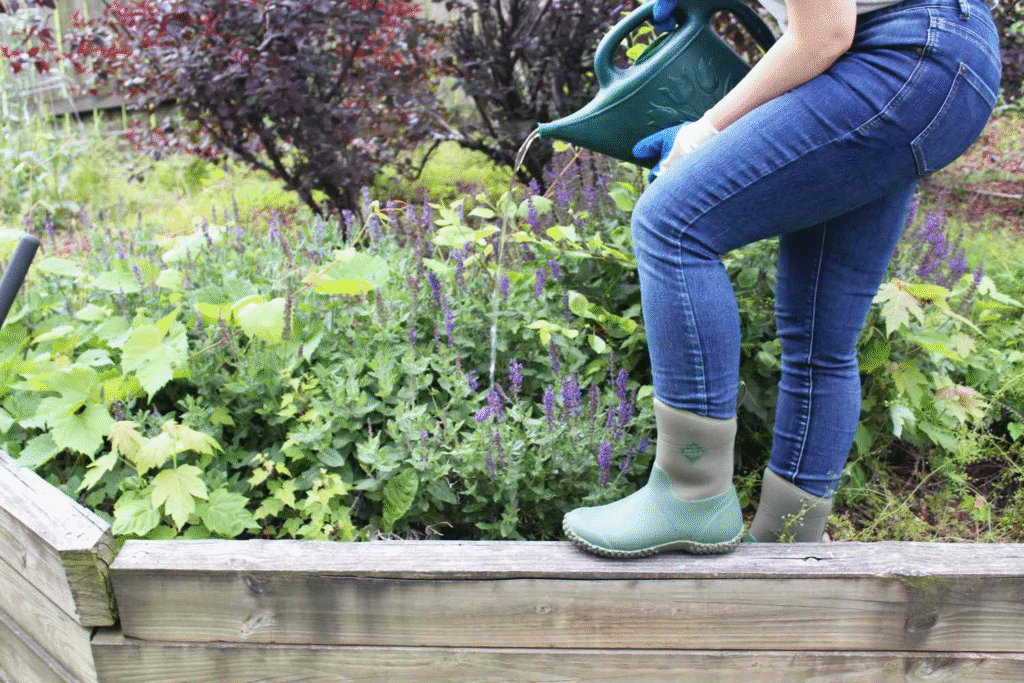
Price Range: $90-$120
Key Features: 100% waterproof, cushioned insole, flexible design, pull-on handles
These ankle-height garden boots earned our top overall ranking for their perfect balance of protection and mobility. Made from Forest Stewardship Council-approved rubber and algae-based EVA, they provide complete waterproof protection while offering flexibility not found in traditional rubber boots.
Six months of testing revealed their exceptional durability—they remained in nearly pristine condition despite regular use in challenging conditions. The contoured insoles provide outstanding support, while the built-in heel kick makes them easy to remove without bending over.
While they offer more coverage and warmth than clogs or slip-ons, they may cause feet to heat up during very warm weather. For cool or wet conditions, however, they’re the ideal choice for serious gardeners.
Muck Boot Muckster II Ankle Boots

Price Range: $90-$130
Key Features: Neoprene and rubber construction, roll-down versatility, self-cleaning outsole
For variable weather conditions, these versatile boots offer an ingenious design feature—a flexible upper shaft that can be rolled down to create a more shoe-like fit in warmer weather. The 100% waterproof construction combines 4mm neoprene with durable rubber to create a boot that handles the messiest garden conditions with ease.
The self-cleaning outsole design prevents mud from collecting and tracking indoors, while the breathable lining wicks moisture away from feet. A six-month test period confirmed their outstanding durability and comfort for extended garden work.
The boots’ calf width can feel snug when worn with thicker pants, so consider this when selecting your size. For serious gardeners who work in varying conditions, this versatility makes them worth the investment.
XTRATUF Salmon Sisters Legacy Boots
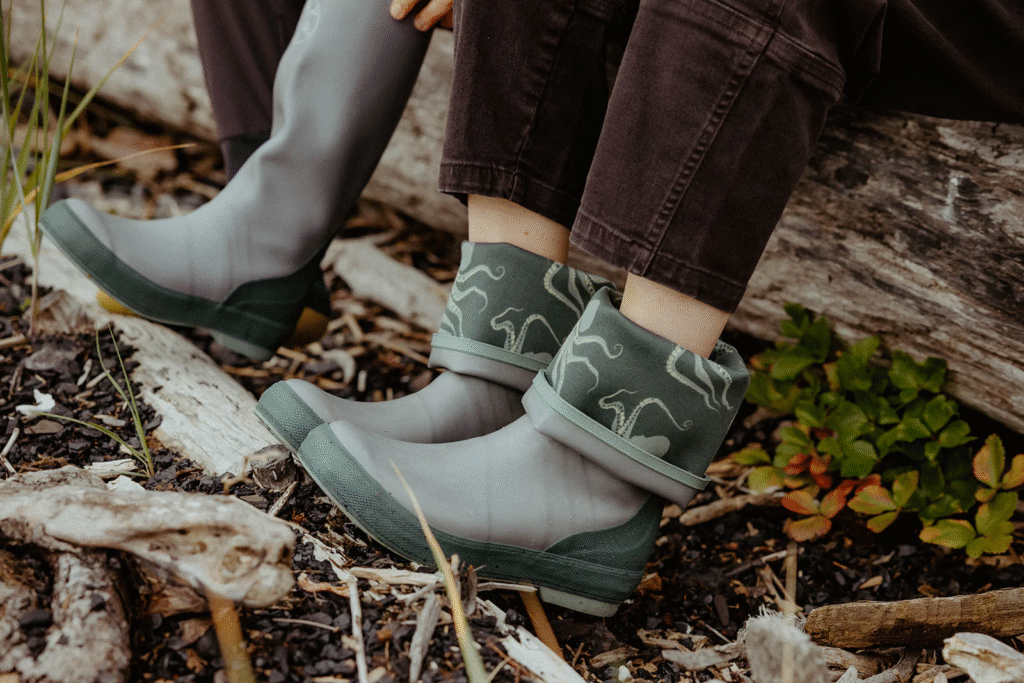
Price Range: $120-$150
Key Features: Heavy-duty construction, mid-calf height, excellent traction, decorative interior
These heavy-duty boots were originally designed for commercial fishing but have found a dedicated following among gardeners working in particularly wet or muddy conditions. The mid-calf height provides maximum protection, while the slip-resistant ChemGrip outsole ensures stable footing on slick surfaces.
The neoprene and rubber construction offers flexibility and comfort not typically found in purely rubber boots. A unique design feature is the decorative pattern (featuring octopus artwork by Alaskan fishermen) revealed when rolling down the boot tops—adding style to highly functional footwear.
While possibly overkill for light gardening tasks, these boots excel in challenging conditions like early spring mud, flood cleanups, or working in very wet garden plots. Their exceptional traction and waterproofing make them a go-to choice for serious gardening in demanding environments.
Hunter Original Tall Rain Boots
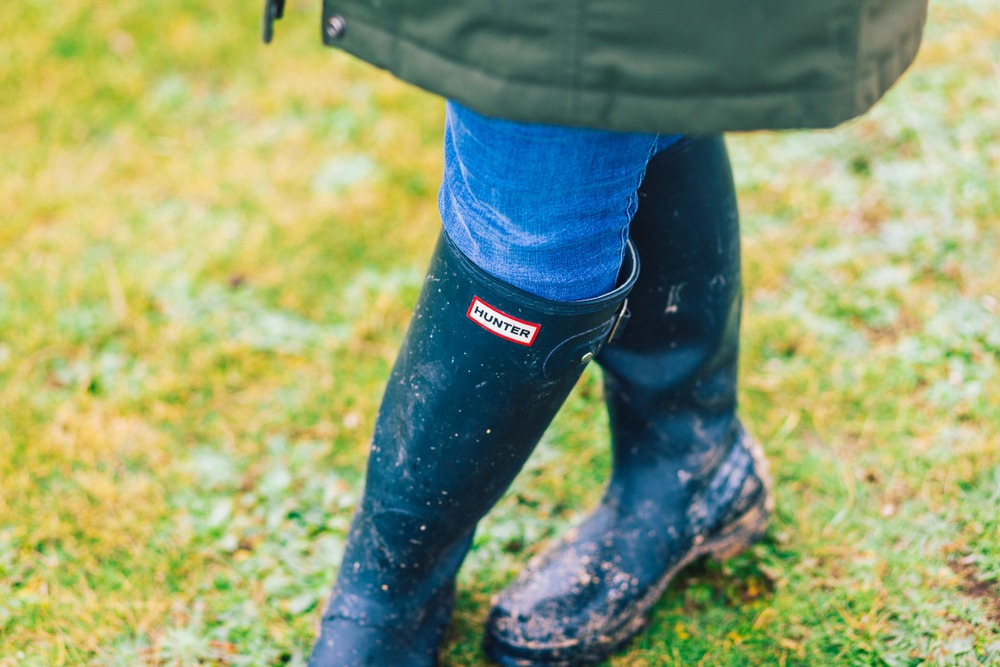
Price Range: $140-$170
Key Features: Classic design, vulcanized rubber construction, extended height, buckle adjustment
For gardeners seeking maximum protection with timeless style, Hunter’s iconic rain boots deliver heritage quality. The tall shaft height provides comprehensive protection from wet brush, thorny plants, and deep mud, making them ideal for intensive landscape work.
The vulcanized natural rubber construction offers complete waterproofing with a slightly more structured feel than neoprene-blend options. The adjustable buckle allows for a customized fit at the calf, while the cushioned footbed provides comfort during extended wear.
Available in numerous colors and patterns, these boots combine serious garden functionality with style that transitions seamlessly to running errands after garden work. The higher price point reflects their premium construction and lasting durability—many gardeners report their Hunter boots serving faithfully for a decade or more.
Key Considerations When Choosing Garden Footwear
Finding the perfect garden footwear depends on several factors unique to your specific needs:
Weather Conditions and Seasonality
Different garden footwear excels in different conditions:
- Warm, dry weather: Ventilated clogs or slip-ons with breathable materials
- Wet conditions: Fully waterproof options with sealed seams
- Cold weather: Insulated boots with neoprene or fleece lining
- Variable climates: Convertible boots or owning multiple pairs for different seasons
Garden Tasks and Intensity
Your typical gardening activities should influence your choice:
- Light maintenance: Basic clogs work well for watering and quick garden checks
- Active planting and weeding: Slip-on shoes with more foot protection and traction
- Heavy landscaping: Ankle boots or taller for maximum protection
- Varied activities: Consider versatile options or maintaining multiple pairs
Foot Support Needs
Individual foot concerns require specific features:
- Arch support: Look for contoured footbeds or the ability to add custom insoles
- Wide feet: Seek brands with wide width options or roomier toe boxes
- Ankle stability: Choose options with supportive collars if stability is a concern
- Standing comfort: Prioritize cushioned midsoles for extensive standing time
Ease of Cleaning
Garden footwear should simplify your post-gardening cleanup:
- Material: Rubber and EVA clean more easily than fabric-inclusive designs
- Tread patterns: Consider whether deep lugs might collect and trap mud
- Removable insoles: These allow for more thorough cleaning and faster drying
- Care requirements: Some options require occasional treatment to maintain appearance
Maintaining Your Garden Footwear
Proper care extends the life of your garden shoes or boots:
- Regular cleaning: Rinse off mud and debris after each use rather than allowing it to dry and harden
- Proper drying: Allow footwear to air dry naturally away from direct heat sources
- Storage location: Keep garden footwear out of direct sunlight when not in use
- Insole care: Remove and wash insoles separately for thorough cleaning
- Seasonal check-ups: Inspect for cracks or damage at the beginning of each gardening season
Finding the Perfect Fit
Ensuring proper fit is crucial for garden footwear comfort:
- Sizing variations: Different brands size differently—check whether they run large or small
- Sock factor: Consider whether you’ll typically wear thick or thin socks with your garden footwear
- Half-size solutions: Look for brands offering half-size inserts or adjustable features
- Width considerations: Some garden footwear brands offer wide width options for broader feet
- Return policies: Check the return policy when ordering online to ensure you can exchange if needed
Environmental Considerations
Many gardeners prioritize eco-friendly options:
- Sustainable materials: Some brands now use recycled or plant-based materials
- Longevity: Durable footwear that lasts for years creates less waste
- Recyclability: Some manufacturers offer recycling programs for worn-out garden shoes
- Production practices: Research brands committed to environmentally responsible manufacturing
Conclusion: Investing in Garden Comfort
Quality garden footwear represents an investment in both your comfort and gardening efficiency. By selecting the right option for your specific needs, you’ll enjoy:
- Longer, more comfortable gardening sessions
- Protection from moisture, debris, and potential injuries
- Reduced cleanup time through easy-to-clean designs
- Durability that provides value over multiple growing seasons
Whether you opt for lightweight clogs for quick garden check-ins, versatile slip-ons for varied tasks, or heavy-duty boots for serious landscaping, dedicating a specific pair of footwear to your garden activities will enhance your overall gardening experience. By keeping your feet dry, supported, and protected, you can focus on what really matters—nurturing your outdoor space and enjoying the therapeutic benefits of connecting with nature.
